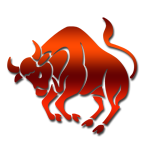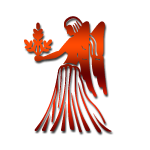Paid Services
Lohri 2019 Dates & Rituals
Lohri is a festival of rejoicing for a good harvest and showing gratitude to the almighty for a good yield. The festival is often associated with Sikhism and Punjab, though it is celebrated with equal zeal all over North India. The festival is linked with agricultural activities and farmers. It marks the beginning of the harvesting season, as it is celebrated on the last day of the month of Paush. Lohri is often understood as liting up a bonfire and dancing to folk music. The festival however holds a rich history.

Find out other festivals in 2022: Calendar 2022
Mythological Legend
There was a man named Dulla Bhatti Wala who was considered to be the Robinhood of Punjab. He lived in a place that lied between Gujranwala and Sialkot. There happen to be a thick forest named Rakh. Dulla Bhatti Wala was a dacoit and used to rob rich and corrupt people to help the poor and needy.
Once, out of jealousy someone spread a rumour about a Hindu girl that she was very beautiful and should only be in the emperor’s Harem. On listening to this, Mughal officers at once decided to take the girl forcibly. Her father sought the help of dacoit in the matter. Dulla Bhatti Wala took charge of the protection of the girl and at once got her married to a Hindu boy by liting up a bonfire in the jungle, following the Hindu custom. He, in the absence of a priest, himself sang a self-composed song that is even sung today to celebrate the festival.
Click here to know Lohri 2020 Date and Significance
The existence of Dulla Bhatti Wala adds an element of valor to the occasion and is praised for his good deeds on Lohri. The festival majorly revolves around him but there are other aspects of the festival too.
- Magh is the month of harvesting. Rabi crop is harvested from the farms and the farmers sell it to reap the benefits of their hard work. They dedicate the first crop to the supreme Lord and pray to bless them. Also this marks the beginning of a financial new year.
- Lohri is celebrated a day before Makar Sankranti. It is the day when night is the longest and day shortest. During cold season of Winter, sitting near a bonfire is soothing and when given the shape of a festival, it feels even better.
- With Lohri, people bid goodbye to the barren winters and spring, which symbolizes fertility is welcomed. The festival is associated with fertility and harvesting on human grounds too. The first Lohri of a newly married couple or a child born in the family is celebrated with great pomp and show.
Origin of the Name
- The name Lohri is supposedly taken from the word Loi or Lohi, which means warmth of fire. Nothing can be more pleasing than a bonfire and popcorns during chilling winters.
- Some people also believe that Lohri is associated with the story of Bhakt Prahlad, the son of Hiranyakashipu. His father made him sit in the bonfire with his aunt Holika, whose sister was Lohri. Though there are no supporting statements for the same.
- Sindhi community also has some links with the festival. The celebrate something alike with the name Lal Loi. However it is not commonly observed in the community.
Food
Punjab and punjabis are known for their love for food. Celebrations and festivals seem to be incomplete without good food. Though the traditional cuisines associated with the festival of lohri is makki di roti and sarson da saag, dishes made of til (sesame seeds) and gur (jaggery) are quite popular too. The Rabi crop includes spinach, mustard, corn and sugarcane. The farmers have a fine stock of both the crops at the commencement of the month of Magh. This is the reason why most of the food items made on Lohri involve these seasonal crops. Some delicacies made on the auspicious occasion include - ganne ki kheer (a sweet dish made with rice and sugarcane juice), pinni (atta ladoo), dry fruit chikki, til barfi, gachak etc.
Know the auspicious time in 2022: Muhurat 2022
Rituals
- Lohri Loot: The festival of Lohri begins a couple of days before when children go from door to door and sing folk songs to ask for Lohri, which includes gifts in the form of money and sweets. Popular songs of the occasion revolve around Dulla bhatti wala and Sundri-Mundri. It is considered inauspicious to return the children empty-handed and thus they make a good fortune on the festival.
- Bonfire: Bonfire is the inevitable part of the festival, since morning people start collecting branches of trees and other stuff like cow dung cakes to be placed in bonfire. At night, people gather near the bonfire and light it after thanking god for a good harvest. A parikrama is performed around the bonfire and people pray to Lord Agni, the fire god, for prosperity. Popcorns, Peanuts, Til are offered to the fire and distributed among the people. The occasion is celebrated with friends, family and neighbours. Men and women dress up in colorful traditional clothes to sing folk songs and dance to the rhythm of a dhol.
- Dining together: Generally the families who beget a newborn or a bride invite relatives and friends to their house where they dine together, exchange gifts and enjoy the festive spirit. Lohri is not only the festival of Punjab, but a festival symbolizing happiness, fertility and life. The central element of the festival is harvesting of crops and hoping for a golden yield, but the occasion also signifies growth and new relations.
- Flying kites: In some parts of Punjab, people also fly kites during the day to celebrate the festival.
Why Lohri Puja?
The festival is associated with earth, fire and sun. All three are essential for life. If Sun is the driving factor of life on earth, it is the earth that has the capacity to grow crops on it. Fire is used to cook the food and symbolizes health. On the joyous occasion of Lohri, one must thank mother nature for all the gifts that she has bestowed upon us, and pray to the supreme power for protection and prosperity.
- 2025 Horoscope
- 2025 राशिफल
- 2025 Chinese Horoscope
- 2025 चीनी राशिफल
- 2025 Muhurat
- 2025 मुहूर्त
- 2025 राशि भविष्य
- 2025 முகூர்த்தம்
- 2025 মুহূর্ত
- 2025 ముహూర్తం
- 2025 મુર્હત
- 2025 മുഹൂർത്തം
- 2025 ಮುಹೂರ್ತ
- 2025 মুহুৰ্ত
- 2025 ମୁହୂର୍ତ - ତିଥି ଓ ସମୟ
- 2025 ਮਹੂਰਤ
- 2025 ରାଶିଫଳ
- 2025 ਰਾਸ਼ੀਫਲ
- 2025 ರಾಶಿಭವಿಷ್ಯ
- 2025 രാശിഫലം
- 2025 રાશિફળ
- 2025 রাশিফল
- 2025 ராசி பலன்
- 2025 రాశిఫలాలు
 Best quality gemstones with assurance of AstroCAMP.com More
Best quality gemstones with assurance of AstroCAMP.com More
 Take advantage of Yantra with assurance of AstroCAMP.com More
Take advantage of Yantra with assurance of AstroCAMP.com More
 Yantra to pacify planets and have a happy life .. get from AstroCAMP.com More
Yantra to pacify planets and have a happy life .. get from AstroCAMP.com More
 Best quality Rudraksh with assurance of AstroCAMP.com More
Best quality Rudraksh with assurance of AstroCAMP.com More
Get your personalised horoscope based on your sign.



















